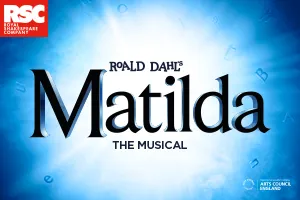The key to the 'The Girls of Slender Means' is a poem. It is recited eloquently and repeatedly on stage and describes a nun who goes to a certain death with love and grace. A certain death, a certain birth with a grasping illusion in between forms the nub of tragic fate and Muriel Spark's 1963 novel, ambitiously adapted for the stage by Judith Adams, tells us we are no captains of our fate.Pointedly, the play opens with the martyrdom of Nicholas Farringdon (Jamie Lee), a Catholic brother in Haiti, in a scintillating sequence of haunting music, watery projected visions and sound fragments of the same poem. 'The Wreck of The Deutschland' by Gerard Manly Hopkins is recited as if by some sweet ghost to Nicholas in his dying moments. The words flow over us; "I kiss my hand to the stars, lovely-asunder, starlight, wafting him out of it; and glow, glory in thunder".It is another glory in thunder which we abruptly jump to; the young girls of slender means. The thunder - the war, the glory - the girls' blooming youth in springtime, victoriously poised England, 1945. We are in the May of Teck Club, an imposing four story hostel opposite the Albert Memorial. Its purpose is, in brief, for 'The pecuniary convenience and social protection of ladies of slender means who are obliged to reside in order to follow an occupation in London'. And out they come on stage, walking, smiling, brave and full of life, excitedly relating what it was like at that defining era. They wave little Union Jacks except Greggie, who has Scottish pennant of course. This sends a ripple of laughter through the audience.The experience of the play is immersive, splintered and dreamlike. It feels as if the mind was triggered by some odd event. The memory sweeps like a hand through a tingling river of laughter, vitality and regret, and emotion flows through the body. This swim of the senses is felt in both the structure of the book and of the play. This is interpreted as a surreal aesthetic with imagination and gusto by Muriel Romanes.Just as in the Novel, Judith Adams reveals the end at the beginning and we are left to discover why, not what, happened. Nicholas Farringdon's death, occurs at some point well after the war. This is the 'odd event' where we start. His death is shown at the opening and then a few scenes later when columnist Jane Wright relays the death to Dorothy over the phone. We then jump back to 1945 when the girls were at the May of Teck. The play shuttles back and forth disregarding linear time for an emotional one but leading to the end which is where we started, with Nicholas Farringdon.This sounds confusing written but our experience of theatre is of events parallel, disjointed, linear, backwards, repeating - any sort of presentation and we usually follow along. In this case, we follow but where we end up is at question.The girls are the epitome of war time idealism; austerity, work and cheer. 'Keep your pecker up' chides Lady Julia (Mary Keegan), their exacting host. The girls struggle with rations, bombs and calories, as well as Julia. They bicker and make-up. We hear Churchill on the radio. Selina (Candida Benson) wants to be a model. Greggie (Maureen Beattie) revives the garden from old roots and is a self-described botanical thief. Tilly (Denise Hoey) pretends to date a movie star. A new girl called Joanna (Melody Grove) is to come. Joanna, with her foreboding fear of hell. They are all afraid and they are all vibrantly alive; their youth assured, their purpose uncertain. Yet their very connection to the reality around them and the absolute absurdity of what was dealt puts their fingers in clay and their hearts, as if above them, in bloom. "Death is just a tick away" warns one of the girls.Though they are short of men and long for new stockings, each struggles to cope with uncertainty and same-sex domesticity. Selena finds solace in her dictum; "Poise in perfect balance and equanimity of body and mind, complete composure, immaculate grooming and perfect deportment...". And she finds men. Joanna recites Hopkins' poem. Tilly dresses splendidly. A single fashionable dress is shared amongst them. Torn from their families and belongings they bond as one in the May of Teck and simply make-do. "All the nice people are poor" says Lady Julia. Despite their full engagement with every living moment, there is an undercurrent of desperation and fear. The dress hanging high above the stage reminds us that something is out of reach for them. Voices chant "Mind the windows, keep away from the windows, watch out for the glass" and a bomb ticks and ticks.The play resonates at many levels. Yes, there's a cruelty of fate and the random promise of life. Ineffectual religious convictions, worldly necessity, the slenderness of a waist that gets you through a skylight or not is how Ms. Sprarks slices life and the girls struggle against their place in it. The fractured structure of the work itself exudes these darker themes. There is the also the era. Britain is at war now as was then. There is a shared sense of celebration of life in the girls perhaps because they were building a future not only for themselves but for the nation. The invasion of Iraq, a very different war, contrasts in its darkness of purpose. Our recession does not have us all on rations quite yet but we might get a chance, by Lady Julia's meter, to become 'nice people'.The performances are solid throughout. Candida Benson's Selina has a dangerous material sexuality perfect for the character. Denise Hoey creates a giddy but endearing Tilly evoking a girlish woman of uncertainty. Mary Keegan plays Lady Julia with grace and humour.Merle Hensel's set is simple but effective - even for this very large 750 seater at the Assembly Music Hall Theatre. Rolling translucent partitions serve to create rooms, project images, connect the past to the present and confine the action, like a lens. At the rear is a huge wall of sandbags, a constant reminder of reality. The simplicity serves for a quick change from scene to scene. We don't need to see the brown wall paper, the girls complain about, to have a feel for where they lived. Lighting by Natasha Chivers is economical and succinct. Light shines through the partitions to reveal and to hide and to connect the past to the present. The use of video projection by Finn Ross is skillfully more suggestive than demonstrative and comes and goes letting us see just enough to trigger a thought or a mood.But does the play work or is actually too splintered to sustain any dramatic and emotional consistency? Adaptation is a tough gig. Be faithful to the original and you risk losing the intention in a different medium. Sway from the original and you risk alienating anyone who has ever read the book. Ms. Sparks is a Scottish hero. We're in Scotland. What are you going to do?Picking the low hanging fruit for a second. There are some strange choices in casting. Why is the actor playing Nick Farringdon also playing Joanna's fiancé curate? 700/750 people were confused. This is how we see the story. Nick Farringdon (the same actor we saw martyred)is a raging curate who wants to publish a book and marry Joanna. Then, Nick Farringdon is an anarchist who also wants to publish a book and has a possible love for Joanna. Then, etc, Nick is a Catholic Brother in Haiti and gets chopped up by the natives. The person beside me asked afterwards "Was Joanna in hell at the beginning?". That's about as confused as you can get. At any rate, the scene is superfluous to the staged story. Which brings me to the second point. There is a crucial scene which Joanna cannot escape because of her size. The actress is a beautiful and very importantly, slim, i.e. not heavy, which was a critical problem for Joanna in the book. The scene with Joanna onstage is both unclear and ungainly.The original work is difficult to adapt for the stage and this hampers the end result. This is the kind of work where you don't let the director read the original. The fact that Nick's fate ties the story together in the book becomes a problem when dramatized onstage along with the life of the girls at the hostel. By the 30 minute mark, it was not clear (to me) who or what this story was essentially about. I looked around and, to my surprise, the audience was generally rapt. However, by show end, confusion reigned generally and comments followed out the door and down the stairs as we all marched out.Ms. Adams and director Ms. Romanes achieve a high energy production in their adaptation of Ms. Sparks' book. But this energy is diffused through a disconnected storyline that leaves the audience hanging. The dramatic sense of The Girls of Slender Means is not lost in translation. It just wasn't there to begin with.


















